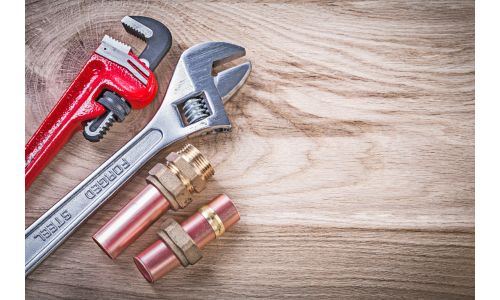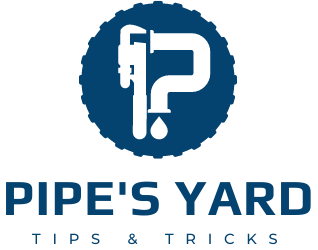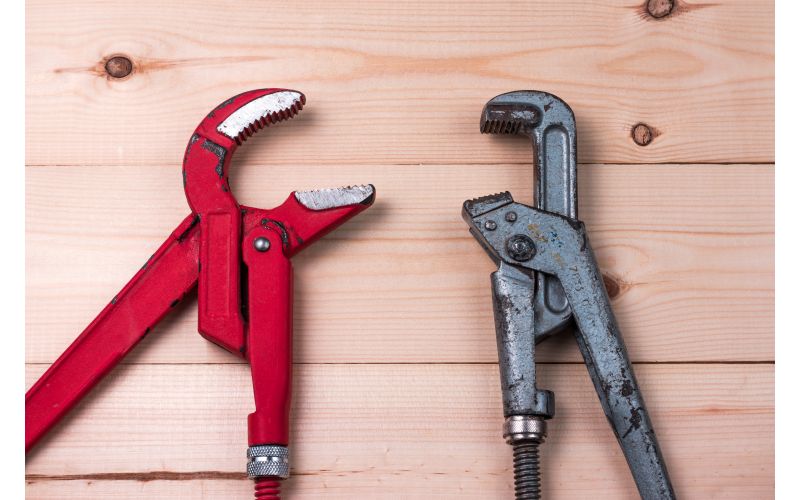Have you ever worked on any projects related to plumbing or mechanical work? You surely realize how vital excellent equipment is.
So, when it comes down to pipe wrench vs spanner, do you know which tool is superior? Both tools are useful for various tasks. While they do have certain similarities they are generally unique in design, function, and use.
To assist you choose the right tool for the job, we’ll highlight the features of both the pipe wrench and the spanner. We’ll begin by discussing the nature and purpose of these two instruments.
Pipe Wrench Vs Spanner: Choosing the Right Tool for the Job
Spanners and wrenches might be confused depending on the location you reside in the world. Putting it straightforwardly, the two tool terms can be used similarly and incorrectly in the US and UK.
In the United States, a wrench is both a set tool and a tool that can be changed. But in the United Kingdom, a set tool that only comes in one size is called a spanner, and a tool that can be changed is called a wrench.

Important Considerations to Keep in Mind
Before deciding on which tool would be the most appropriate to get your job done, consider these factors.
- Figure out how much room you have and how portable the job needs to be
- Think about the surface and the material you’re working with to see whether marking or scratching is a problem
- The amount of friction and power required for the job at hand must be analyzed
How to Use a Pipe Wrench: What It Is and How It Works
The pipe wrench, which is also called a Stillson wrench, is a special tool that is used to hold and turn pipes and connections. There used to be a time, it was known as ‘America’s most famous tool.’
It has a mouth that can be adjusted and sharpened teeth that make it easy to hold on to circular items. The long handle gives you more force, so you can turn stubborn or tightly-fitted parts with more power.
High-quality wrenches are constructed from chromium-vanadium alloy tool steels. Chrome plating prevents rusting and improves maintenance. In comparison to spanners, wrenches are usually not too expensive.
Pipe wrenches are mostly used for plumbing jobs, like putting and removing threaded lines, fittings, and valves. Their sturdy design and strong grip make them great for handling pipes with bigger diameters. The jaw is movable, so it can be used with pipes of different sizes.
If you need a visual, you may also watch this video.
Types of Wrench
Wrenches come in numerous shapes and sizes and they can multifunction.
1. Spud Wrench
Contractors and electricians rely on spud wrenches. Spud wrenches for pipe fittings have complex handles with rotating methods.
2. Torque Wrench
A torque wrench is a precise tool that lets you fix nuts, bolts, and screws to a specified pressure.
3. Chain Wrench
Chain wrenches are pipe wrenches. Chain wrenches have a pipe-fitting rope and an adjustment function.
4. Socket Wrench
A socket wrench tightens and loosens bolts. As they’re versatile, they’re the most common wrench kind.
Advantages
- Great grip and power for working with big lines and fittings
- Can be used for heavy-duty tasks because they are built to last
- The design is flexible and changeable, so it can be used with pipes of different sizes
Downsides
- The teeth’s lines can leave lines or cuts on particular surfaces
- It has few uses outside of plumbing and mechanics
- Large pipe tools can be hard to use in small areas because of their size and weight
Learning about the Spanner: What It Is and How It Works
Spanners, sometimes also called wrenches or adjustable wrenches, are used for turning and capturing different hardware such as nuts and bolts. It has a fixed jaw and a moving jaw that can be moved and adjusted with a thumbwheel or knurled screw.
Carbon, and chrome vanadium, are used to make spanners. For longevity, spanners are heat-treated. Most specialized tools, like a flexible spanner, cost more than wrenches which can be used for a variety of tasks.
Spanners have multiple uses outside of the automotive, construction, and maintenance sectors. They are perfect for working with triangular or square screws because they give you a good grip while tightening or removing them.
The movable jaw lets spanners work with different types of nuts and bolts, making them a useful tool.
For a crystal-clear explanation, we recommend checking out this video.
Types of Spanner
The following spanner kinds are common.
1. Open-ended Spanner
They have one bigger U-shaped base and are useful for removing and tightening nuts and bolts, particularly those that are hard to find.
2. Combination Spanner
A combination spanner has one open end and the other end that is closed.
3. Ring Spanner
These tools have loops connected to both sides, and the ring bases work through a combination of square or hexagonal bolt ends.
4. Stubby Spanner
This little combo spanner is ideal for tight places. Some stubby spanners have sliding handles for twisting and perfection.
Benefits:
- It can be used for a lot of different things besides plumbing, like fixing cars and doing general repairs
- The design is flexible and adaptable because it can be changed
- They are smaller and lighter than pipe wrenches, which makes them good for tight areas
Negatives
- When working with bigger pipes or fittings, they don’t work as well as pipe tools when it comes to grip and force
- It wasn’t made for heavy-duty tasks that need a lot of power
- If the jaw is not in the right place, it can slip or round off the edges of the bolts
Frequently Asked Question
Let’s have a look at some questions that are often asked about pipe wrenches and spanners now that you have all the facts.
Q: What’s the most popular size of a pipe wrench?
Use 10-inch and 14-inch wrenches. These are good for house repairs. If needed, add an 18-inch. However, calling a plumber can be best for bigger pipe-wrench work.
Q: What can you do without a spanner?
A Zip-tie can be used. These great little tools aren’t just great for organizing wires and putting on hubcaps, they are also useful instead of a wrench.
Q: Is a pipe wrench necessary?
Yes. Pipe wrenches are still useful, particularly for iron and galvanized steel pipes with round fittings, although water pump pliers are less complicated to handle.
Conclusion
In the battle of pipe wrench vs spanner, both tools have their uses. In drainage, the pipe wrench deals with and pushes bigger pipes and fittings. However, the spanner is suitable for square and square-like screw applications.
Know your design and instrument’s pros and cons to choose the best one with confidence. Undoubtedly, using the wrong tool can make your life miserable. With that being said, hope you found what you’re looking for. So, good luck and happy plumbing!

